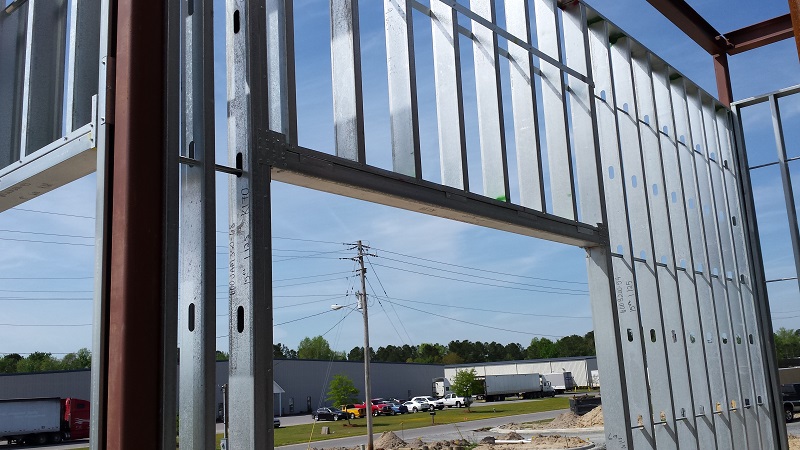Cold-formed steel brings a lot of ingenuity to the construction industry that many people simply take for granted. While it’s certainly not a new material, there are new things learned daily about the capabilities of cold-formed steel.
In fact, cold-formed steel can actually be MORE versatile and useful than nearly any other building material. While it has some limitations, it offers far more advantages and is truly useful for just about any situation. Plus, it basically fills in the blanks where other material options simply can’t deliver.
We’ve put together a quick overview of 5 reasons to give cold-formed steel a try.
What is Cold-Formed Steel
If you’re at all familiar with steel, then you know that steel parts for construction are typically uniform. They are formed and melded together using a heat process. Cold-formed steel is just the opposite. It is a sheet of steel that is molded and formed as needed and there is absolutely no heat needed for the process.
Cold-formed steel can typically be formed at room temperature. Once it is formed, it stays formed. There is no shrinking or warping, or deforming of any kind when it comes to cold-formed steel.
Why does this make cold-formed steel superior to other building materials? That’s what we will discuss…
1. High Tensile Strength Rating
If you pay attention to the steel framing requirements, you find that steel is one of the best weight-bearing framing materials on the market. When it comes to comparing strength to weight, you see that steel has one of the highest ratios for this particular category.
When cold-formed steel is formed into specific framing materials like a joist or a stud, this formation actually increases the strength rating and makes the steel more durable and capable of holding more weight.
In fact, when cold-formed steel has been formed into the framing pieces, the effect can be a framing material that is 7 times more stable than lumber; meaning the strength-to-weight ratio is approximately 7x more.
Ultimately, the use of cold-formed steel boils down to the structural planning and design processes.
2. Reduced Fire Risk
Steel is considered a non-combustible material. While materials like wood can burn very quickly, steel won’t burn. This means that when steel is used for a structure, it won’t add any fuel should a fire break out. This helps reduce the spread of the fire and also reduce the damage that a fire could cause.
Steel has a melting point of approximately 2,700 degrees Fahrenheit and most structural fires do not even reach half of this temperature. This is almost a guarantee that steel will not melt and could be beneficial in the event of a fire.
3. Fewer Pests
Another positive aspect of cold-formed steel is that you are far less likely to have a structure that can be terribly affected by pests. Because steel is an inorganic material, termites and similar pests take no interest in it and therefore cannot cause structural damage like they do to wooden structures and frames.
Did you know that termites actually cause more destruction to buildings and various structures than natural disasters and fires do? This is not the case with steel. Termites have no interest in this material.
You’re also less likely to see other pests within the structure because steel is more effective at keeping some of those pests and critters out. There are fewer cracks and crevices for them to sneak in through.
4. Steel is Durable
Steel is incredibly durable. It is the framing material of choice if you want a building that will potentially stand up against terribly things like hurricanes, earthquakes, tornadoes, and demolition blasts.
Steel is not affected by heat or cold, meaning it won’t swell up or warp or adjust in any way from these elements. It’s stable in the wind and not affected by moisture. Once it’s formed and in place, there is little to be concerned about in terms of durability.
Other materials simply can’t deliver the same promise. Wood tends to swell in the heat or moisture and brick has been known to do the same. Wood has a tendency to crack, split, and warp when it gets dry or cold. Concrete shrinks and then forms cracks because of shrinking.
Steel is not susceptible to any of these issues.
5. Save Money with Cold-Formed Steel
Finally, cold-formed steel can be cost-effective in more ways than one. First, cold-formed steel is affordable to purchase. While it does cost more than wood, it costs considerably less than other construction materials. Right now, the industry prices are at an all-time low.
Additionally, you can save money over time because you chose to use cold-formed steel. It can reduce your costs of maintenance and upkeep and potentially even reduce your costs for things like insurance as well.
Conclusion
Overall, cold-formed steel offers a lot of benefits. It’s well worth taking a look if you are planning a new structure, and we hope you can cold-formed steel can help you build faster, safer, lighter, and stronger on your next project.


Recent Comments